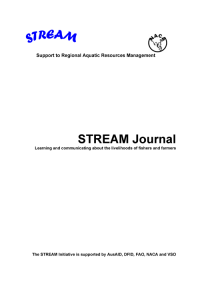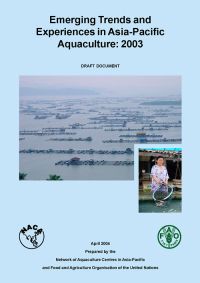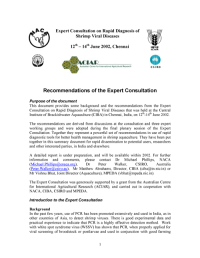In this issue: BFAR moves on in Region 6. Livelihood initiatives in Sapian Bay. Improving access to information through Barangay Learning Resource Centers. e Philippines Fisheries Information System. The contributions of planning activities in the participatory process. Inter-LGU alliance building: A key to sustaining the integrated fisheries and aquatic resource management council. About the STREAM Journal. About STREAM. This edition is also available in Ilonggo and Urdu.
This document provides an overview of topical issues in Asian aquaculture for 2003, including a review of its status, progress in research and development, major issues and experiences, together with suggestions on actions for addressing opportunities and constraints. The document was prepared by NACA and FAO to facilitate discussions at the 15th NACA Governing Council meeting, hosted by the Government of Sri Lanka on 21st-25th April 2004.
In this issue:
Genetic impacts of translocation on aquatic biodiversity in Asia. Carp culture in Iran. Opportunities and challenges in Myanmar aquaculture. Impacts of monosex Macrobrachium culture on seed availability in India. Use of new technology and skills for eco-friendly production of tiger shrimp Penaeus monodon. Larval rearing and spat production of the windowpane shell Placuna placenta. HACCP in shrimp farming. First breeding success of Napoleon wrasse Cheilinus undulatus and coral trout Plectropomus leopardus.
Recommendations of the Expert Consultation on Rapid Diagnosis of Shrimp Viral Diseases, Chennai 2002
The recommendations are derived from discussions at the consultation and three expert working groups and were adopted during the final plenary session of the Expert Consultation. Together they represent a powerful set of recommendations in use of rapid diagnostic tools for better health management in shrimp aquaculture. They have been put together in this summary document for rapid dissemination to potential users, researchers and other interested parties, in India and elsewhere.




